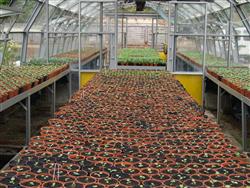
Know about greenhouses
Learn how to manage a greenhouse
Learn to grow crops and nursery stock plants in a greenhouse, shade house or other protected situation.
This course not only provides a credit in ACS qualifications, accredited through IARC; but it also prepares you to sit for RHS modules and acquire credits in the RHS advanced certificate or diploma.